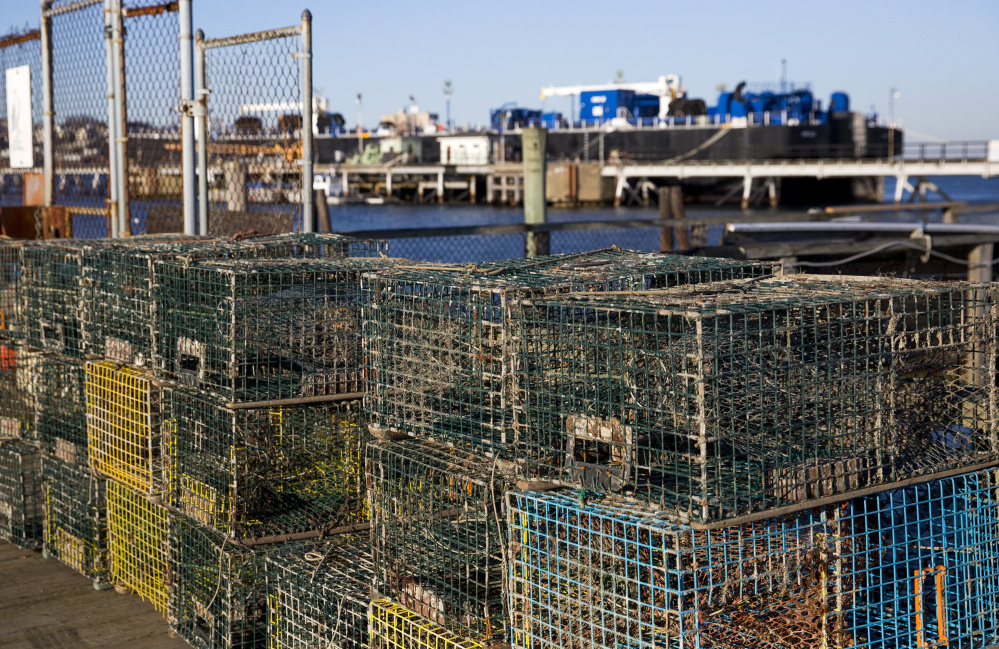Another year, another record catch by the Maine lobster industry. With the value and volume of landings up just about every year for a decade, it seems like it will never end.
But we only have to look a few miles south, to Massachusetts, to know that it can. And even closer, in Maine’s own mill towns, we can see what happens when we don’t see the future for what it is, and don’t plan for what’s next.
For the sake of towns up and down the Maine coast, state and industry leaders can’t make that mistake. Planning for what seem like inevitable changes in the lobster industry have to start now.
RESEARCH NEEDED
The first step is finding out just what is going on in the Gulf of Maine. Warning that the record catches may not last, state-funded scientists say the number of very young lobsters is way down, signaling there will be drop-off in catch once that generation is old enough for the dinner table.
That decline could mean that lobsters are reproducing at a different time, or at a different depth. Or it could mean that they have moved north in search of colder waters.
Gov. Paul LePage is proposing to fund that research out of the state surplus, telling the Maine Fishermen’s Forum on March 4 that he no longer wants to raise fees on lobstering licenses.
The support from the governor is great news – not enough of the money earned from the record landings has gone to lobstermen themselves, and the entire state has a stake in maintaining the fishery.
But the governor also should be prepared to follow the research where it goes. It could be that the decline in young lobsters is just a blip; however, evidence suggests warmer water is the culprit, and LePage has not in the past been friendly toward policies aimed at curbing climate change.
In fact, the record catches are partly attributed to warming waters, which cause younger sexual maturity in lobsters. In that way, they could be a sign that a fall is coming.
WARNING SIGNS
That dynamic is well-known in southern New England. Lobster landings in Buzzards Bay, Massachusetts, went from just under 1 million pounds in the 1980s, to 400,000 in the late 1990s, to just 72,000 pounds in 2012.
Farther south, in Long Island Sound, the lobster catch fell from 3.7 million pounds in 1998 to just 142,000 pounds in 2011.
At the same time, water temperature recordings taken off Waterford, Connecticut, found that the number of days over 68 degrees – a key marker for lobster reproduction – increased dramatically after 1998, when there were just five.
There were 55 days over 68 degrees in 1999, then 75 in 2000, and it has stayed around that level since.
Lobstermen in Maine, who want the research as much as anyone, don’t have to be told the data to know what they’ve seen with their own eyes. Sure, the catch has increased steadily, but it also has moved, with more of the action that was once seen in Casco Bay now centered around Stonington and other Down East ports.
Indeed, lobsters are searching for the right mix of cold and warm water, and that search in the North Atlantic is moving them 43 miles a decade, according to the journal Science.
The Gulf of Maine is warming faster than just about anywhere on the planet. What that means to the next generation of lobstermen, and the communities that live and die by lobstering, is up to us.
PREPARE FOR THE FUTURE
Maine can’t do a lot by itself to combat climate change, but it can set an example – for instance by recommitting to renewable energy.
Our state and federal elected officials also can lobby Congress and the president to maintain vehicle emissions and air quality standards, to stay dedicated to the Paris climate change accord and to consider bipartisan measures, such as a carbon fee and dividend system, that hold hope for real progress.
There also must be a better plan – any plan – for economic development for the communities away from Maine’s metro areas.
Everything possible should be done to support and maintain the lobster industry, but the state also should begin planning for a different future. Paper mills that failed to adapt to market forces failed, and the mill towns that relied so heavily on one industry have been devastated. There’s a lesson there.
The decline of lobstering may be decades away, if it comes at all, and we should do everything possible to support and grow the industry.
But we’d be foolish to see the change in lobstering as it crept up the Eastern Seaboard and not believe it could happen here.
Send questions/comments to the editors.


